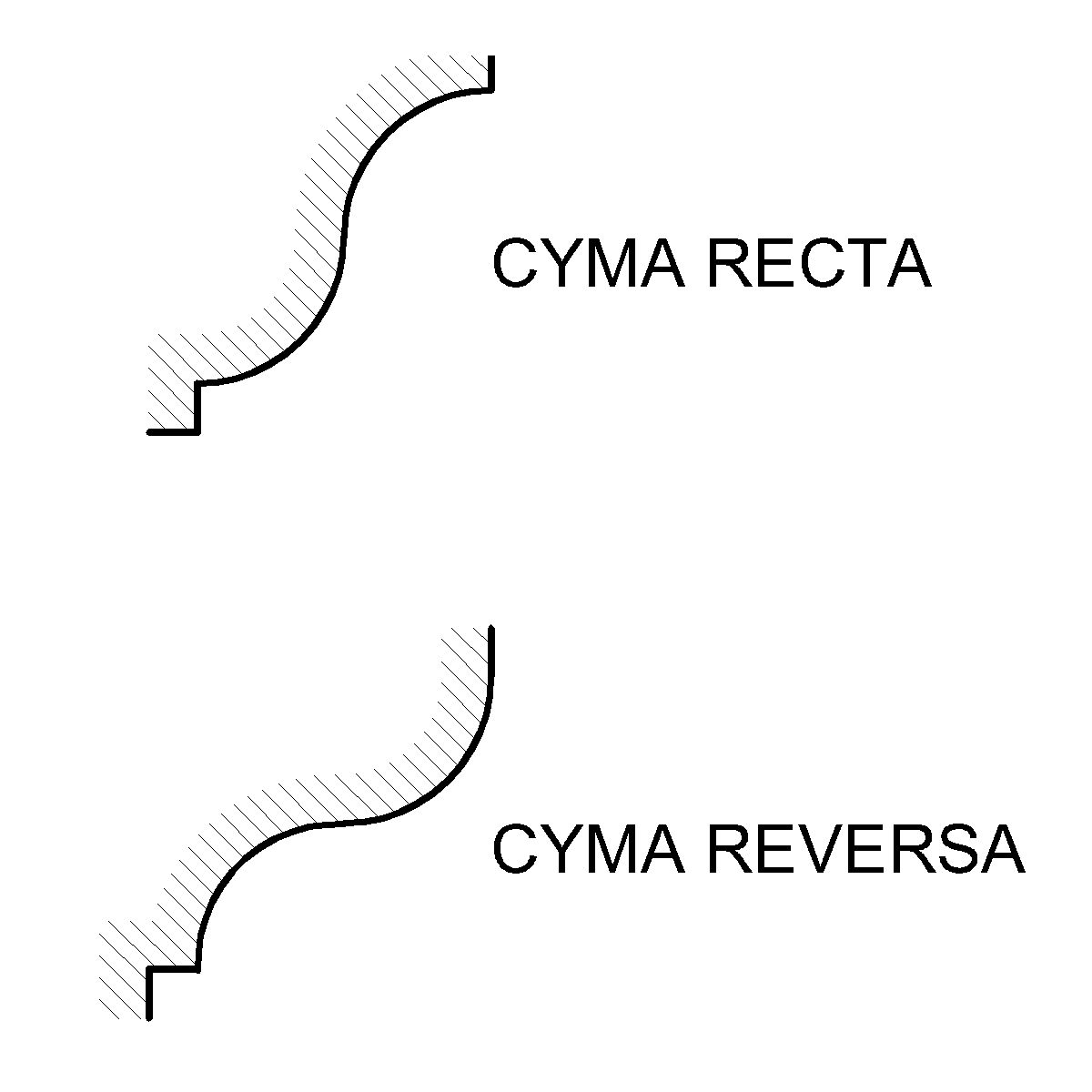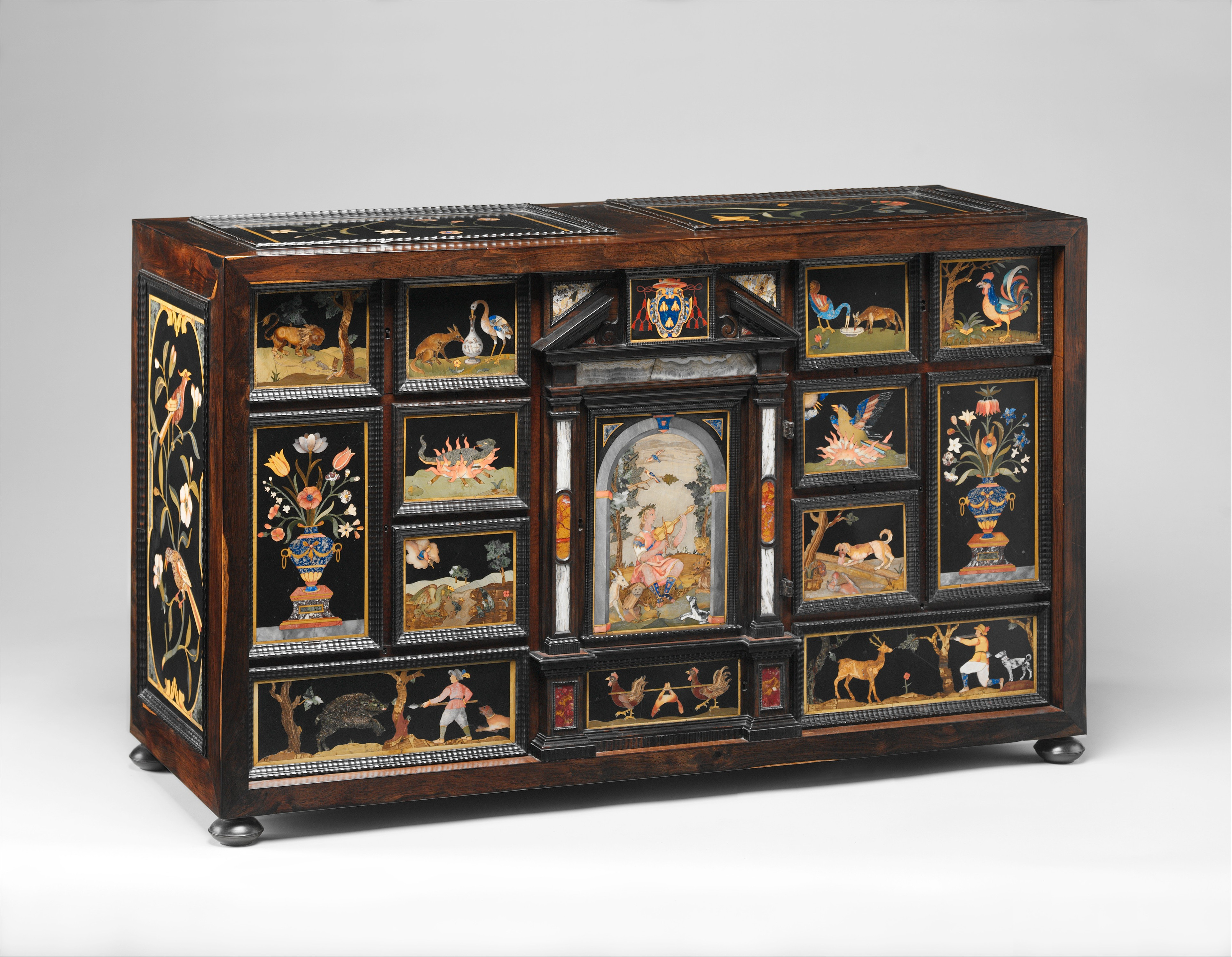|
Ovolo
Ovolo is an Italian language, Italian word that means "little egg". The ovolo or echinus is a convex molding (decorative), decorative molding profile used in Ornament (architecture), architectural ornamentation. Its profile is a quarter to a half of a more or less flattened circle. The 1911 edition of ''Encyclopædia Britannica'' says:adapted from Ital. ''uovolo'', diminutive of ''uovo'', an egg; other foreign equivalents are Fr. ''ove'', ''échine'', ''quart de rond''; Lat. ''echinus''... [as used] in architecture, [for] a convex moulding known also as the echinus, which in Classic architecture was invariably carved with the egg and tongue. In Roman and Italian work the moulding is called by workmen a quarter round. The "egg and tongue" referred to, also known as egg-and-dart, egg-and-anchor, or egg-and-star, refers to alternating egg and V-shapes enriching the surface of the concave ovolo in many early cases. The description of ovolo as the fundamental convex quarter-round elem ... [...More Info...] [...Related Items...] OR: [Wikipedia] [Google] [Baidu] |
Molding (decorative)
Moulding (British English), or molding (American English), also coving (in United Kingdom, Australia), is a strip of material with various profiles used to cover transitions between surfaces or for decoration. It is traditionally made from solid milled wood or plaster, but may be of plastic or reformed wood. In classical architecture and sculpture, the moulding is often carved in marble or other stones. In historic architecture, and some expensive modern buildings, it may be formed in place with plaster. A "plain" moulding has right-angled upper and lower edges. A "sprung" moulding has upper and lower edges that bevel towards its rear, allowing mounting between two non-parallel planes (such as a wall and a ceiling), with an open space behind. Mouldings may be decorated with paterae as long, uninterrupted elements may be boring for eyes. Types Decorative mouldings have been made of wood, stone and cement. Recently mouldings have been made of extruded polyvinyl chl ... [...More Info...] [...Related Items...] OR: [Wikipedia] [Google] [Baidu] |
Cavetto
A cavetto is a concave moulding with a regular curved profile that is part of a circle, widely used in architecture as well as furniture, picture frames, metalwork and other decorative arts. In describing vessels and similar shapes in pottery, metalwork and related fields, "cavetto" may be used of a variety of concave curves running round objects. The word comes from Italian, as a diminutive of ''cave'', from the Latin for "hollow" (it is the same root as cave). A vernacular alternative is "cove", most often used where interior walls curve at the top to make a transition to the roof, or for "upside down" cavettos at the bases of elements. The cavetto moulding is the opposite of the convex, bulging, ovolo, which is equally common in the tradition of Western classical architecture. Both bring the surface forward, and are often combined with other elements of moulding. Usually they include a curve through about a quarter-circle (90°). A concave moulding of about a full semi-c ... [...More Info...] [...Related Items...] OR: [Wikipedia] [Google] [Baidu] |
Cabinetry
A cabinet is a case or cupboard with shelves or drawers for storing or displaying items. Some cabinets are stand alone while others are built in to a wall or are attached to it like a medicine cabinet. Cabinets are typically made of wood (solid or with veneers or artificial surfaces), coated steel (common for medicine cabinets), or synthetic materials. Commercial grade cabinets usually have a melamine-particleboard substrate and are covered in a high-pressure decorative laminate commonly referred to as Wilsonart or Formica. Cabinets sometimes have one or more doors on the front, which are mounted with door hardware, and occasionally a lock. Cabinets may have one or more doors, drawers, or shelves. Short cabinets often have a finished surface on top that can be used for display, or as a working surface, such as the countertops found in kitchens. A cabinet intended to be used in a bedroom and with several drawers typically placed one above another in one or more columns inte ... [...More Info...] [...Related Items...] OR: [Wikipedia] [Google] [Baidu] |
Stile And Rail
Frame and panel construction, also called rail and stile, is a woodworking technique often used in the making of coffered doors, ceilings, wainscoting, and decorative panels for cabinets, furniture, and home interiors. The basic idea is to capture a 'floating' panel within a frame, as opposed to techniques used in making a slab solid wood cabinet door or drawer front, the door is constructed of several solid wood pieces running in a vertical or horizontal direction with exposed endgrains. Usually, the panel is not glued to the frame but is left to 'float' within it so that seasonal movement of the wood constituting the panel does not distort the frame. Frame and panel construction at its most basic consists of five members: the panel and the four members which make up the frame. The vertical members of the frame are called stiles while the horizontal members are known as rails. A basic frame and panel item consists of a top rail, a bottom rail, two stiles, and a panel. This is a ... [...More Info...] [...Related Items...] OR: [Wikipedia] [Google] [Baidu] |
Ogee
An ogee ( ) is an object, element, or curve—often seen in architecture and building trades—that has a serpentine- or extended S-shape (Sigmoid curve, sigmoid). Ogees consist of a "double curve", the combination of two semicircle, semicircular curves or arc (geometry), arcs that, as a result of a inflection point, point of inflection from concave function, concave to convex function, convex or ''vice versa'', have ends of the overall curve that point in opposite directions (and have tangents that are approximately parallel). First seen in textiles in the 12th century, the use of ogee elements—in particular, in the design of arches—has been said to characterise various Gothic architecture, Gothic and Gothic Revival architecture, Gothic Revival architectural styles. The shape has many such uses in architecture from those periods to the present day, including in the ogee arch in these architectural styles, where two ogees oriented as mirror images compose the sides of the ar ... [...More Info...] [...Related Items...] OR: [Wikipedia] [Google] [Baidu] |
Cyma Recta Et Reversa
Cyma may refer to either: * An S-shaped decorative molding, used in the cymatium of Greek architecture * CYMA – Canadian Youth Mission to Armenia Cyma may refer to either: * An S-shaped decorative molding, used in the cymatium Cymatium (from Greek κυμάτιον "small wave"), the uppermost molding at the top of the cornice in the classical order, is made of the s-shaped cyma molding (e ..., a Canadian-run humanitarian program * CYMA (software), accounting packages * Cyma Watches, a Swiss watch-making company * Cyma Zarghami, the president of Nickelodeon and MTV Networks' Kids & Family Group * The ICAO code for Mayo Airport {{disambig ... [...More Info...] [...Related Items...] OR: [Wikipedia] [Google] [Baidu] |
Neoclassical Architecture
Neoclassical architecture, sometimes referred to as Classical Revival architecture, is an architectural style produced by the Neoclassicism, Neoclassical movement that began in the mid-18th century in Italy, France and Germany. It became one of the most prominent architectural styles in the Western world. The prevailing styles of architecture in most of Europe for the previous two centuries, Renaissance architecture and Baroque architecture, already represented partial revivals of the Classical architecture of Roman architecture, ancient Rome and ancient Greek architecture, but the Neoclassical movement aimed to strip away the excesses of Late Baroque and return to a purer, more complete, and more authentic classical style, adapted to modern purposes. The development of archaeology and published accurate records of surviving classical buildings was crucial in the emergence of Neoclassical architecture. In many countries, there was an initial wave essentially drawing on Roman archi ... [...More Info...] [...Related Items...] OR: [Wikipedia] [Google] [Baidu] |
Jefferson Memorial
The Jefferson Memorial is a national memorial in Washington, D.C., built in honor of Thomas Jefferson, the principal author of the United States Declaration of Independence, a central intellectual force behind the American Revolution, a founder of the Democratic-Republican Party, and the nation's third president. Built between 1939 and 1943, the memorial features multiple quotes from Jefferson intended to capture his ideology and philosophy, known as Jeffersonian democracy, which was staunchly supportive of American republicanism, individual rights, religious freedom, states' rights, virtue, and prioritized and valued what he saw as the undervalued independent yeoman. Jefferson was simultaneously deeply skeptical of cities and financiers and hostile to aristocracy, elitism, and corruption. He is widely considered among the most influential political minds of his era and one of the most consequential intellectual forces behind both the American Revolution and the American E ... [...More Info...] [...Related Items...] OR: [Wikipedia] [Google] [Baidu] |
Italian Language
Italian (, , or , ) is a Romance language of the Indo-European language family. It evolved from the colloquial Latin of the Roman Empire. Italian is the least divergent language from Latin, together with Sardinian language, Sardinian. It is spoken by about 68 million people, including 64 million native speakers as of 2024. Italian is an official language in Languages of Italy, Italy, Languages of San Marino, San Marino, Languages of Switzerland, Switzerland (Ticino and the Grisons), and Languages of Vatican City, Vatican City; it has official Minority language, minority status in Minority languages of Croatia, Croatia, Slovene Istria, Romania, Bosnia and Herzegovina, and the municipalities of Santa Teresa, Espírito Santo, Santa Tereza, Encantado, Rio Grande do Sul, Encantado, and Venda Nova do Imigrante in Languages of Brazil#Language co-officialization, Brazil. Italian is also spoken by large Italian diaspora, immigrant and expatriate communities in the Americas and Austral ... [...More Info...] [...Related Items...] OR: [Wikipedia] [Google] [Baidu] |
Erechtheion
The Erechtheion (, latinized as Erechtheum ; , ) or Temple of Athena Polias is an ancient Greek Ionic temple on the north side of the Acropolis, Athens, which was primarily dedicated to the goddess Athena. The Ionic building, which housed the statue of Athena Polias, has in modern scholarship been called the Erechtheion (the sanctuary of Erechtheus or Poseidon) in the belief that it encompassed two buildings mentioned by the Greek-Roman geographer Pausanias: the Temple of Athena Polias and the Erechtheion. However, whether the Erechtheion referred to by Pausanias and other sources is indeed the Ionic temple or an entirely different building has become a point of contention in recent decades, with various scholars ruling out that Athena and Erechtheus were worshipped in a single building. Alternative suggested locations of the true Erechtheion include the structures on the Acropolis conventionally identified as the Arrephorion, the Sanctuary of Zeus Polieus, the Sanctuary of ... [...More Info...] [...Related Items...] OR: [Wikipedia] [Google] [Baidu] |







